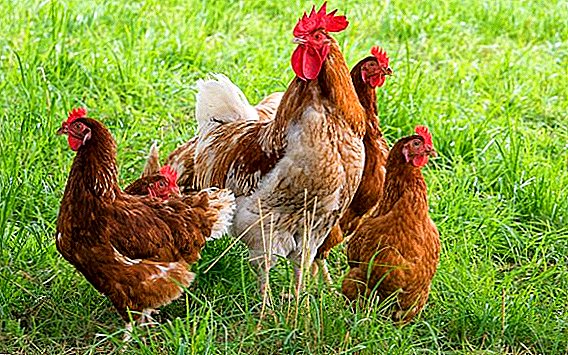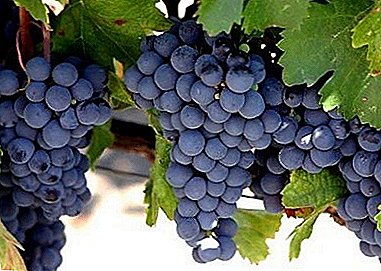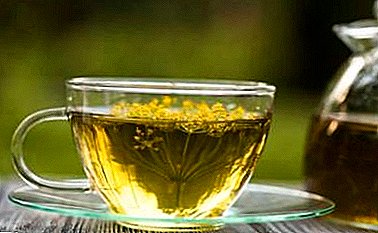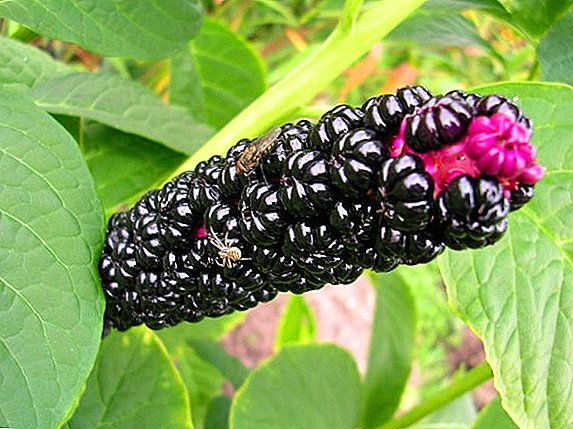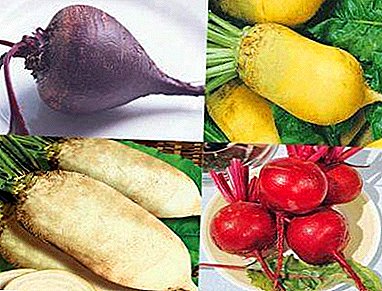
One of the most respected vegetable gardeners, indispensable in the human diet, is considered to be the well-known beetroot. It is believed that in country gardens the cultivation of beets does not require much effort and high costs.
Subject to certain rules and installations, you can achieve high yields and excellent taste.
Today we will talk about the early varieties of this root, which recently received much attention. Look at the photo of each plant, so as not to confuse it with one of the many other varieties.
What is this variety?
By early variety means a plant, the crop from which can be obtained in a short time. On average, this is up to 110 days. Such beet varieties are resistant to cold snaps.The collection starts from the fiftieth to the hundredth day. They are suitable for processing and fresh consumption, as they are stored for only a few months.
Features of cultivation in the open ground
Early varieties are grown in all regions of Russia. Plot for sowing choose sunny, loamy or with clay soil. It is preferable to use the most fertile beds, because beets have a good appetite. She feels comfortable after onions, potatoes and cucumbers, but does not like carrots and cabbage. You can plant seedlings, but it is easier and faster to sow the seeds.
Early varieties are not afraid of cold spells, but remember that beets do not like freezing and sudden changes in air temperature. Therefore, it can be planted after the frost-free period has been established, when the heating of the soil is no less than ten degrees.
Beetroot loves moisture, watering it until the root appears twice a week, then - once. After each irrigation, the land is loosened. 20 days before harvesting, watering is stopped. It improves taste, and increases its shelf life.
Early varieties need to be fed. For the whole growing time should be fertilized every two weeks with a solution of nitrophoska, 1 tbsp. spoon for 10 liters of water. Before harvesting, plants are fed sodium nitrate. In order to prevent all sorts of pests beds can sprinkle with ashes a couple of times.
Description
Aft
Fodder beet is considered a valuable crop.having a milky property. It is necessary to increase the yield of cows, contributes to the growth of productivity and quality of offspring, and also saves the consumption of feed used in winter.
Sometimes fodder beets are issued for the dining room. You can distinguish it by the large size of the root. There is a large amount of fiber in it, but in taste it is inferior to the dining room. Famous varieties of fodder beet.
Semi sugar pink

Resistant to diseases, has a long shelf life. Root crops contain sugar, protein, fat, fiber, vitamins. The tops are fed both fresh and ensiled, suitable for the preparation of herbal flour.
Centaur Poly

Differs in small size, harvest is collected in the third month after disembarkationafter about 65 days.
The variety requires regular treatment, as it is susceptible to various diseases and is vulnerable to pests.
North Orange

The variety has a high yield.which is ready for collection after 100 days is stored for a long time. To feed goes and tops, and root crop. The tops are consumed fresh, as silage, and they also make grass meal.
Root contains a huge amount of protein, fat and fiber, therefore, has a special nutritional value.
Ekkendorfskaya yellow

Mid-season (110-115 days) highly productive variety. Root crop of a cylindrical form, large size, yellow with a green head. The flesh is juicy, yellow.
Mass reaches 1 kilogram. Especially appreciated for stable yield, resistant to flowering, the roots have a smooth shape and have a high nutritional value.
Canteen
Beetroot differs from its counterparts in high taste. Small in size, nutritious, rich in vitamins. It is famous for its healing properties and prevents cancer. Use not only the root, but also the young tops, adding it to salads and other dishes.
Famous varieties of beetroot.
Detroit

Ripens 80–90 days after planting. Round, large size, sweet, dark red color. Long stored.
Egyptian

Early ripe (fully ripens on 85-120 day), high yield. Unpretentious.
Beetroot has a pleasant, sweet taste, root crops of an accurate round form, dark red color.
Learn more about Egyptian flat beets, its cultivation and storage of the crop can be found here.
Boltardi

Maturation term from 75 days. Small in size, resistant to diseases and pests, but has a short shelf life.
Mulatto

Small red vegetables, easily tolerate cold weather.
Kestrel F1

A high-sugar hybrid with a pleasant taste. Not afraid of cold and pests, relatively unpretentious in the care. Ripens from 90 to 100 days.
Sugar
Sugar beets are called roots, which contain a lot of sucrose (we told about the sweetest varieties of this vegetable here). It is grown to produce sugar, and food waste goes to animal feed and fertilizer.
Early varieties of sugar beet.
Bohemia

It is a mid-season variety, ripening from planting to harvest lasts about 100 days. The composition has more than 20% sucrose.
It needs to be plentiful water If watering is sufficient, it is able to grow in light soil with minimal supplement.
Crystal

This variety is bred by Russian breeders.and therefore adapted to the climatic conditions of Russia. Ripens in two to three months. Long stored. It is famous for its rich sweet taste and high starch content.
Florita

Very popular variety, resistant to cold and drought, has an increased immunity to disease.
The best varieties
In choosing the best variety of early beet, in addition to the purpose of its cultivation, the following indicators should be considered:
- yield;
- resistance to weather conditions and diseases;
- storage time.
For sugar beet on these three points, Crystal is the best grade. Due to the selection, it is protected from all threats from the weather and parasites and has good taste. If beetroot is necessary, then you should pay attention to the Egyptian beet varieties, Detroit and Kestrel F1. They will please with a rich harvest and a long shelf life, requiring minimal attention and cost.
For forage varieties, choose Semi-Sugar Pink and Northern Orange. These varieties are very nutritious, they will save feed consumption and have a positive effect on milk production and offspring.
Due to the rich vitamin composition and high nutritional value, as well as a variety of varieties, sugar, canteen and fodder beet never lose its popularity. Its benefits are obvious to the human body. By preventing the emergence of many diseases and maintaining immunity, the beets become an indispensable component of our diet.




